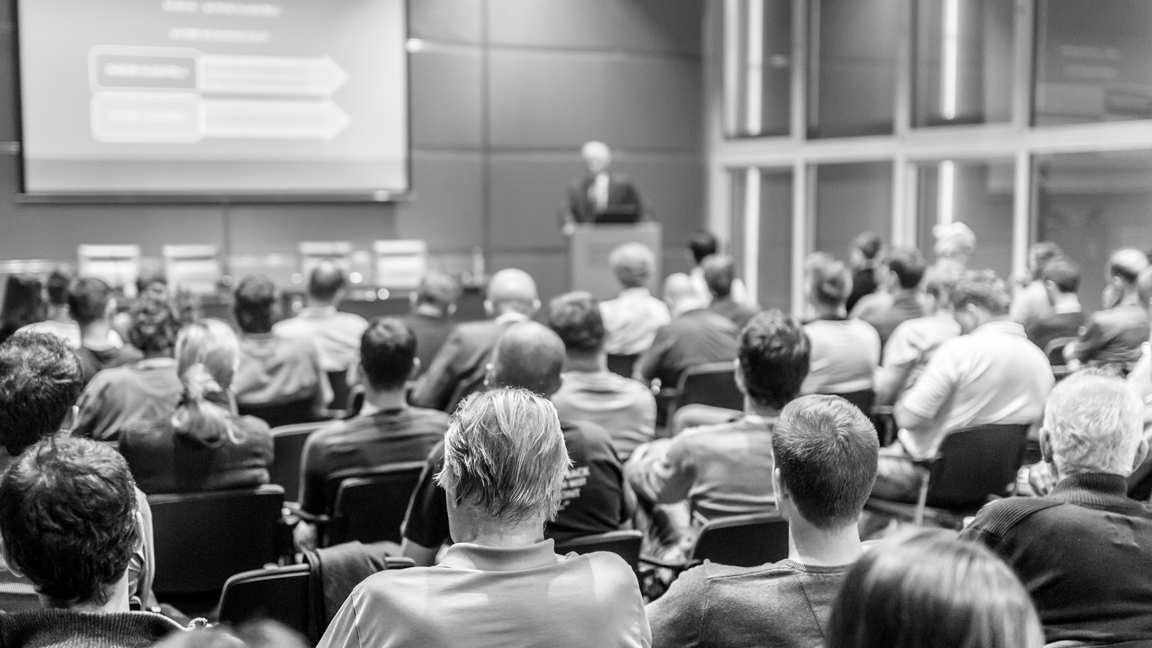You can’t take a bicycle to the moon
You can’t take a bicycle to the moon
You can’t take a bicycle to the moon, so why do so many companies try to take the 3 days in-person conference agenda and throw it up online?
The truth is, because it’s hard.
There are no shortcuts to effective events. However, there are some pro tips. Here are my top things to consider to help you successfully shift your conference from in-person to online.
Reimagine the content
Move away from having a presentation-style delivery be the default.
Doing digital right takes planning and creativity. Plan each agenda item as a segment, rather than a presentation. Mix it up and be mindful of how each segment flows. Considers some presentations, some interviews, some live demonstrations, pre-recorded video, live polls, interactive web chats etc.
Delete the dead air
Rookies plan the agenda—the pros plan for what happens in between.
Think of your event as a television broadcast—5 seconds of blank screen makes people uncomfortable. 10 seconds, and you’ve lost your audience. Having a 5-15 minute break between sessions at an in-person conference may be acceptable. That cannot happen in live streamed events.
There are options to manage the transition experience for every desired outcome and budget. From an MC, to live audience interviews or pre-recorded video. It doesn’t matter how you do it—but it matters that you do.
Plan, Review & Rehearse
Plan every piece of content and design it with a purpose.
Firstly, content planning is critical. Content review and rehearsal is not optional–no matter how senior the presenter is. Pros have a formal process that is managed by a dedicated team, which includes speaker training for techniques on how to engage with an online audience. Be the steward of audience experience. Content should be interesting and valuable to the audience.
Every segment is designed with careful consideration of:
- The audience & the desired outcome
- The desired level of interactivity
- Anticipated audience size
Only then, should you consider format (how you will deliver the content and achieve the desired outcome).
Location, location, location
Virtual events still require excellent locations, often multiple.
If you’re going virtual for the cost savings. Fine. However, don’t skimp on set design, lighting or production. Audiences have high expectations for content they consume via a screen.
As a part of the planning process, each segment needs an accompanying technology/ production plan. This is linked to the speaker and set (physical location) and is particularly important if you will be streaming from multiple locations.
Establish the expectation early that “last-minute” slide uploads are a no-no In live broadcast, every second counts. Avoid injecting risk on show day.
Bonus Tip:
If you manage the talent, you master the experience.
Know early, and check often on where the talent will be – invest and test at each location.
Stuff happens but trying to livestream selfie-style from an airport should never be “planned”.
Interactivity & Engagement
Plan like a variety show, but remember it isn’t.
Make time to interact, in the same way that you interact with an in-person audience. During the planning processes, audience sizes should be estimated, and levels of interactivity and digital format should be discussed. Take a Sales Kick-Off as an example: If you have a digital break-out session for less than 10 people – consider making it fully interactive, like a video call.
There are benefits and opportunities presented by virtual events, that can’t be achieved as easily in person—take advantage of it.
Final Thought:
Don’t skip a network audit – make sure your existing network infrastructure can deliver the content quickly and reliably. If not, make the investment and make sure it works.

Categories
- Bee Wisdom (21)
- Business Intelligence (1)
- Case Studies (1)
- DE&I (1)
- Events (8)
- Experiential Marketing (2)
- Featured (3)
- Hyperlocal Events (1)
- Insights (48)
- Marketing (1)
- Pro Tips (33)



